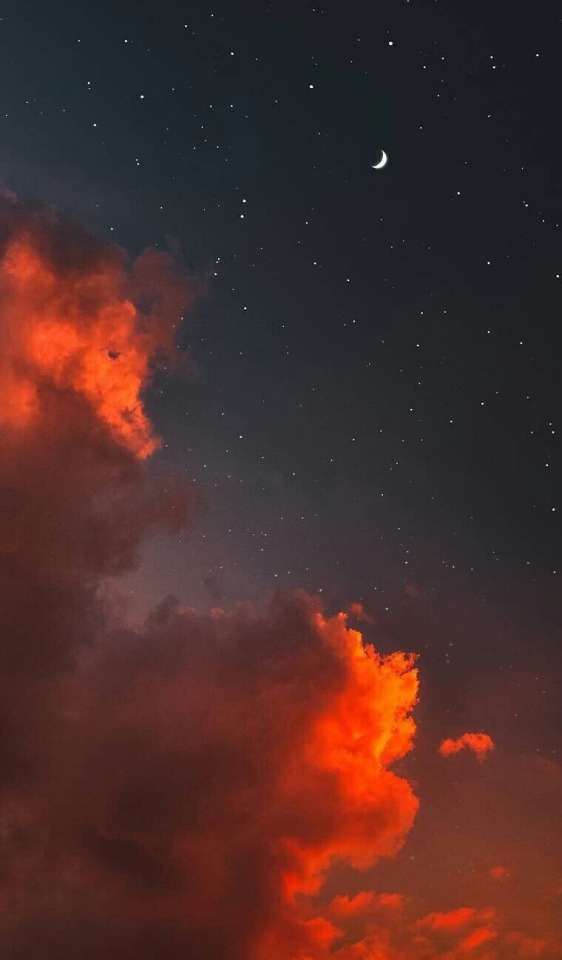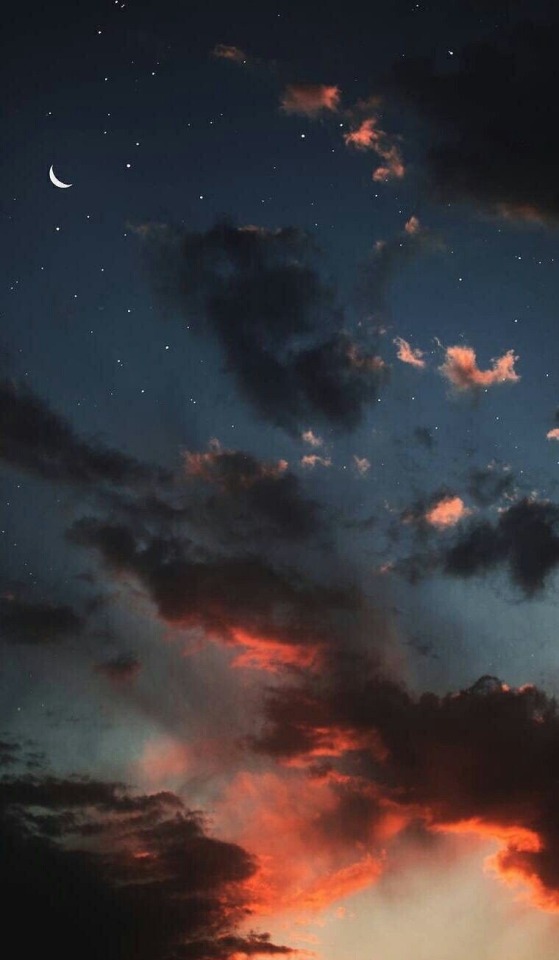For Scientists Watching The Red Planet From Our Orbiters, The Past Month Has Been A Windfall. “Global”

For scientists watching the Red Planet from our orbiters, the past month has been a windfall. “Global” dust storms, where a runaway series of storms create a dust cloud so large they envelop the planet, only appear every six to eight years (that’s 3-4 Mars years). Scientists still don’t understand why or how exactly these storms form and evolve.
Read the full story HERE.
Make sure to follow us on Tumblr for your regular dose of space: http://nasa.tumblr.com.
More Posts from Sharkspaceengine and Others

Picture of the day - November 29, 2018
Its been a while since I showcased an entire star system on here, so the next several sets of pictures will be all the planets in this one system that I am going to name the “Insight System” after the newest Mars lander. Many more picture to come.
Above is a preview pic of the system. This is a binary system, so the planet’s night sides are all faintly illuminated.
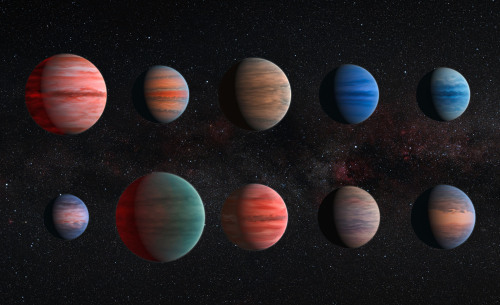
This image shows an artist’s impression of the 10 Hot Jupiter Exoplanets studied using the Hubble and Spitzer Space Telescopes. From the upper left to the lower right corner, these planets are WASP-12b, WASP-6b, WASP-31b, WASP-39b, HD 189733b, HAT-P-12b, WASP-17b, WASP-19b, HAT-P-1b And HD 209458b.
Credit: ESA / Hubble & NASA

Picture of the day - December 3, 2018
Large moon with a hazy atmosphere passes between a gas giant and its rings.

Twin sunrise on a Mercury-like planet.
Another Moon Shot

Picture of the day - October 26, 2018
A large moon against the backdrop of a stunningly colorful gas giant and it’s rings.

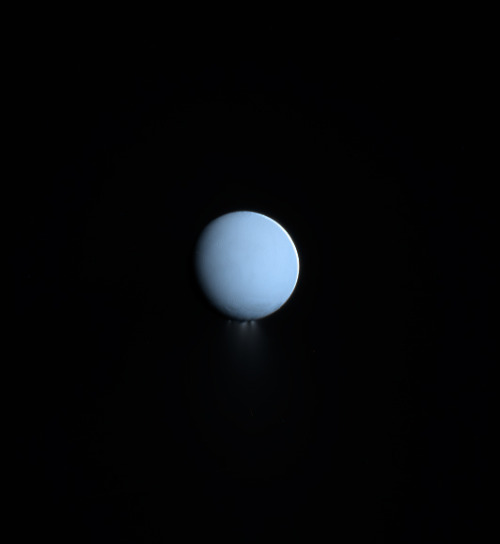



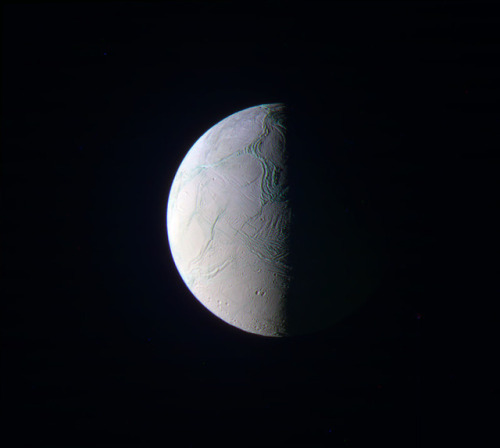

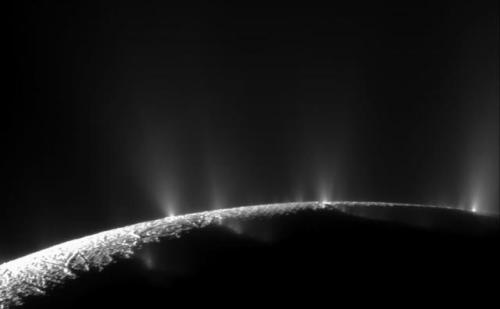

Enceladus
Enceladus is one of the major inner moons of Saturn along with Dione, Tethys, and Mimas. It orbits Saturn at a distance of 148,000 miles (238,000 km), falling between the orbits of Mimas and Tethys. It is tidally locked with Saturn, keeping the same face toward the planet. It completes one orbit every 32.9 hours within the densest part of Saturn’s E Ring, the outermost of its major rings, and is its main source.
Enceladus is, like many moons in the extensive systems of the giant planets, trapped in an orbital resonance. Its resonance with Dione excites its orbital eccentricity, which is damped by tidal forces, tidally heating its interior, and possibly driving the geological activity.
Enceladus is Saturn’s sixth largest moon, only 157 miles (252 km) in mean radius, but it’s one of the most scientifically compelling bodies in our solar system. Hydrothermal vents spew water vapor and ice particles from an underground ocean beneath the icy crust of Enceladus. This plume of material includes organic compounds, volatile gases, carbon dioxide, carbon monoxide, salts and silica.
With its global ocean, unique chemistry and internal heat, Enceladus has become a promising lead in our search for worlds where life could exist.

In 2005, Cassini’s multiple instruments discovered that this icy outpost is gushing water vapor geysers out to a distance of three times the radius of Enceladus. The icy water particles are roughly one ten-thousandth of an inch, or about the width of a human hair. The particles and gas escape the surface at jet speed at approximately 800 miles per hour (400 meters per second). The eruptions appear to be continuous, refreshing the surface and generating an enormous halo of fine ice dust around Enceladus, which supplies material to one of Saturn’s rings, the E-ring.
Several gases, including water vapor, carbon dioxide, methane, perhaps a little ammonia and either carbon monoxide or nitrogen gas make up the gaseous envelope of the plume.
Read more at: solarsystem.nasa.gov
Image credit: NASA/JPL/Cassini & Kevin Gill










Triangulum Log - Post 5 - The Vista System (Planet 4)
The Vista System’s 4th and outermost planet. This dry cold desert world orbits 1.45 AU from the sun. It is the system’s only super-earth type planet with a mass of 4.37 times that of Earth, and a diameter of 11,656 kilometers (1.82 Earth’s). It is surrounded by a dark-gray ring system, likely a shattered satellite that got too close. The atmosphere is thin and dry, composed primarily of carbon dioxide and smaller quantities of ammonia and methane. The surface is cold with a global average temperature of -94° F
A single large satellite orbits close to the planet. The moon has a radius of 1,091 kilometers and a mass one-quarter that of Earth’s moon.
High Resolution Pics
Image 1 - Planet 4
Image 2 - Dusty world
Image 3 - The wastelands
Image 4 - Endless Sand
Image 5 - A glimpse of home. The Milky Way, and Magellanic Cloud Galaxies.
Image 6 - Faint rings
Image 7 - The Lone companion
Image 8 - Dead world
Image 9 - Conjunction
Image 10 - Pre-eclipse






Pictures of the day - November 26, 2018
A system of 6 planet’s orbiting a rare dim carbon star that has swelled into a red giant. All of the planet’s have been roasted by the star. The star has a very low surface temperature; therefore, all of the planets have a red-tint due to the lack of blue colored light.
The outer-most planets form a double planet system which consist of a Mars-like world orbited by an ocean world. The ocean world once being a frozen ice-covered world melted the by expanded sun.
Space Engine System ID: RS 5581-42-4-1201-1122
High Resolution Pictures:
Inner-most world
Massive giant covering the sky
Roasted Ice-giant and its moons
Another burnt world
Outer-most Double Planets
Hurricane
-
 saphicspacesociety17 reblogged this · 1 year ago
saphicspacesociety17 reblogged this · 1 year ago
My Space Engine Adventures, also any space related topic or news. www.spaceengine.org to download space engine. The game is free by the way. Please feel free to ask me anything, provide suggestions on systems to visit or post any space related topic.Check out my other blog https://bunsandsharks.tumblr.com for rabbit and shark blog.
294 posts

